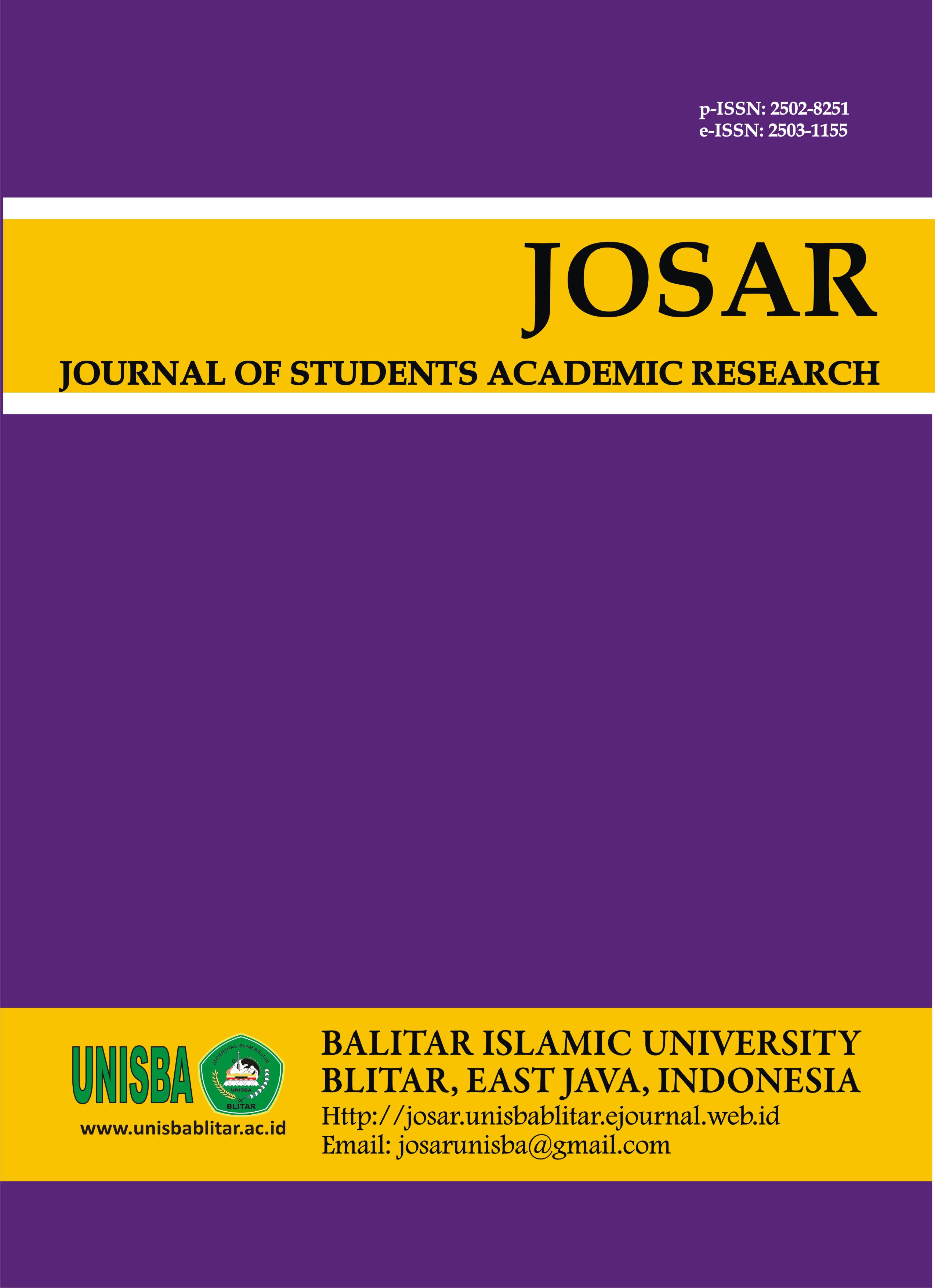REPRESENTATION OF THE CONFLICT OF THE WORKING CLASS AND THE SLAUGHTER CLASS: ROLAND BARTHES' SEMIOTICS ANALYSIS IN MOVIE "TURAH"
DOI:
https://doi.org/10.35457/josar.v8i2.2434Keywords:
gap, education, social statusAbstract
The film Turah describes a situation that exists in today's society. In the film, Turah explains the facts about social inequality in remote parts of Indonesia. Due to socio-economic disparities, social conflicts are unavoidable. This social inequality results in injustice and position in society. The striking difference is in the financial ability and social status of the people living in certain neighborhoods. This form of social inequality makes it difficult for the lower class to get access to development outcomes to education.
References
Deddy Mulyana. (2014). Ilmu Komunikasi: Suatu Pengantar (Cetakan 18). PT. Remaja Rosdakarya.
Machmud, A. (2017). Ekonomi Islam: Untuk Dunia yang Lebih Baik. Salemba Empat.
Pratiwi, M. H. (2020). Sinopsis Turah, Potret Perlawanan terhadap Penindasan, Segera di Viu. Kompas.Com. https://www.kompas.com/hype/read/2020/12/02/121922166/sinopsis-turah-potret-perlawanan-terhadap-penindasan-segera-di-viu
Riwu, A., & Pujiati, T. (2018). Analisis Semiotika Roland Barthes pada Film 3 Dara. Deiksis, 10(3), 212–223. https://doi.org/10.30998/deiksis.v10i03.2809
Sukanto. (2006). Suatu pengantar pengantar sosiologi. In Jakarta: CV Rajawali.
Sumarno, S. (2014). Problema dan Resolusi Konflik Sosial di Kecamatan Johar Baru - Jakarta Pusat. Sosio Konsepsia, 3(2), 1–6
Wisnu, Y. (2021). Film Turah, Kisah Warga Kampung Tirang Tegal Lawan Ketakutan. Solopos.Com. https://www.solopos.com/film-turah-kisah-warga-kampung-tirang-tegal-lawan-ketakutan-1219992
Downloads
Published
Issue
Section
License
Authors who publish in this journal agree to the following terms:
- Authors retain copyright and grant the journal right of first publication with the work simultaneously licensed under a Creative Commons Attribution License that allows others to share the work with an acknowledgment of the work's authorship and initial publication in this journal.
- Authors are able to enter into separate, additional contractual arrangements for the non-exclusive distribution of the journal's published version of the work (e.g., post it to an institutional repository or publish it in a book), with an acknowledgment of its initial publication in this journal.
- Authors are permitted and encouraged to post their work online (e.g., in institutional repositories or on their website) prior to and during the submission process, as it can lead to productive exchanges, as well as earlier and greater citation of published work (See The Effect of Open Access).
Deprecated: json_decode(): Passing null to parameter #1 ($json) of type string is deprecated in /home/ejournal.unisbablitar.ac.id/public_html/plugins/generic/citations/CitationsPlugin.php on line 68










